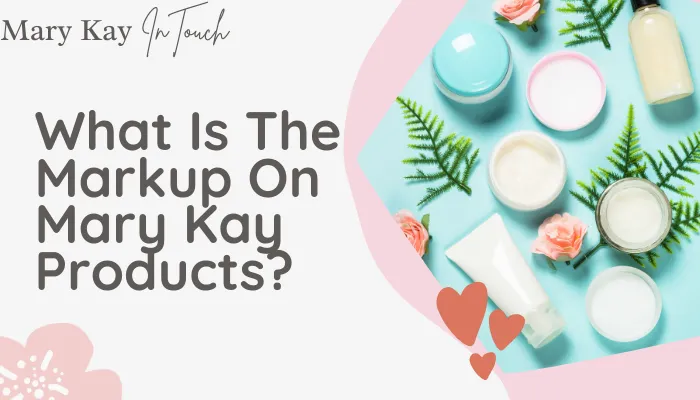Mary Kay? It is synonymous with high-end beauty products that operate on a unique direct-selling model. But how do the final prices come about for Mary Kay products? The answer lies in what is called markup, which is an important aspect of any retail business, including Mary Kay.

What is Product Markup?
Markup in simple terms refers to the difference between wholesale price (what Mary Kay pays to make and distribute) and retail price (what you pay as a customer). Such a margin enables businesses to cover costs and build profit.
What’s the importance of markup? It lays the foundation stone for profitability. An established strategy of markup ensures that all expenditures made by firms from manufacturing to marketing are fully paid for while offering room for healthy profit margins.
What Affects Mary Kay’s Product Markup?
Markup on Mary Kay’s goods may differ based on several factors. These major players will be discussed further herein:
- Cost of Goods Sold (COGS): This consists of all costs related to bringing a product from the idea stage to your shelf. They include:
- Production Costs: Raw materials, labor, and machinery used in making the product.
- Packaging Costs: Design material and printing used in creating attractive packaging that holds the product.
- Distribution Costs: How much it takes to get the manufactured good from where it was made to Mary Kay warehouses then to independent beauty consultants (IBCs).
- Direct Selling Model Impact: Unlike traditional retail stores which have expensive overheads such as rent, salaries for physical store staff, etc., Mary Kay uses a direct selling model. IBCs purchase at wholesale cost and sell directly to customers, thus there will be no need for physical storefronts or their associated costs; this could mean some lower markups compared to traditional retailers.
- Marketing and Promotional Expenses: Even without traditional stores, Mary Kay invests in marketing and promotional activities. This could include:
- Commissions for IBCs: Mary Kay incentivizes its independent consultants with commissions based on their sales.
- Branding and Advertising: The brand awareness and introduction of new products require carefully planned marketing campaigns.
- Free Samples and Promotions: Giving away free samples or running special incentives can be a great way to attract new customers but it comes at an overall marketing expense.
Knowing these factors which influence the markup of Mary Kay’s products allows you to make informed decisions as a customer. Understanding the “why” behind your price tags can enable you to compare between different things effectively thus finding the best value for your money.
So, what is the markup on Mary Kay products?
Unfortunately, Mary Kay does not publicly state its exact markup percentages. The final retail price considers all the factors mentioned above, as well as specific product details and market conditions. Nonetheless some sources argue that there is a potential profit margin of 40-50% for independent beauty consultants who are under contract with Mary Kay [4]. Thus, it may imply that consultants set competitive prices for their items while still making a commission from them.
By understanding what product markup entails in relation to the direct selling model used by Mary Kay, one is better placed to make informed purchase decisions in the cosmetics arena.
